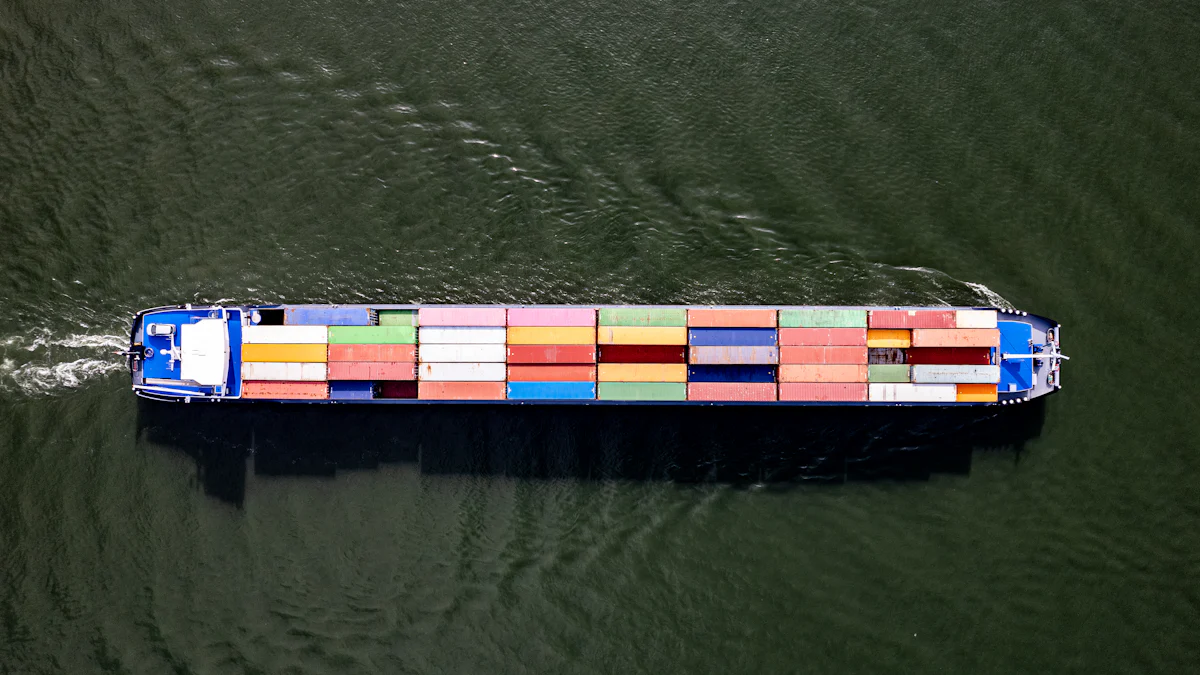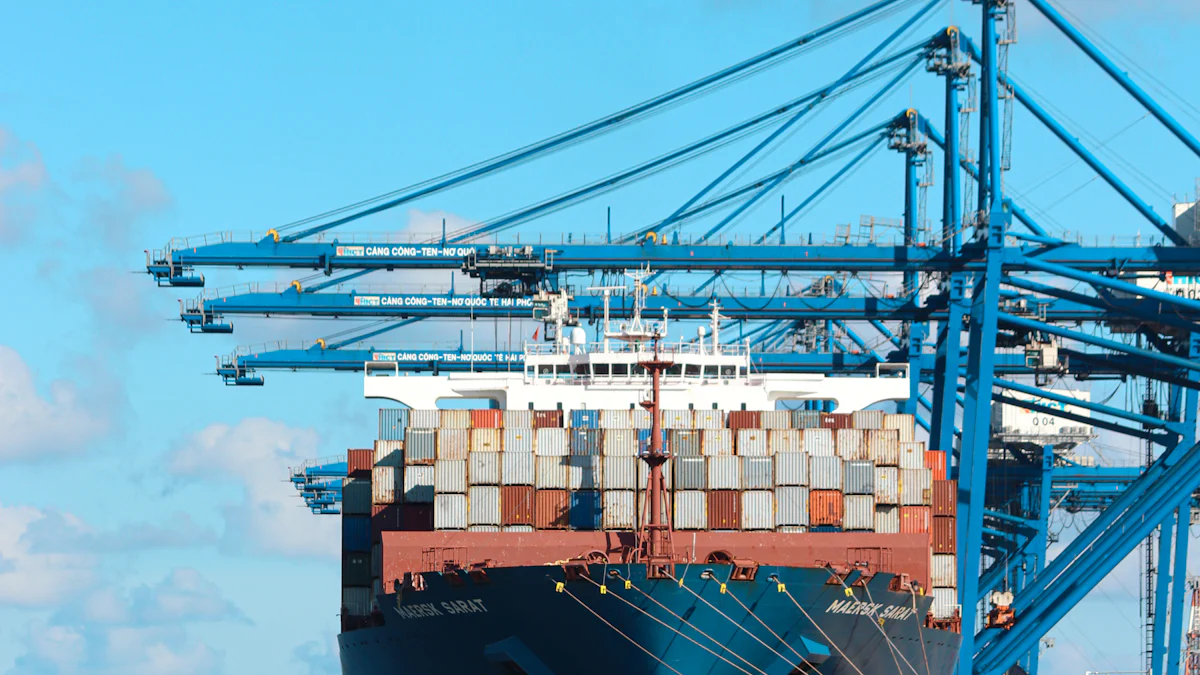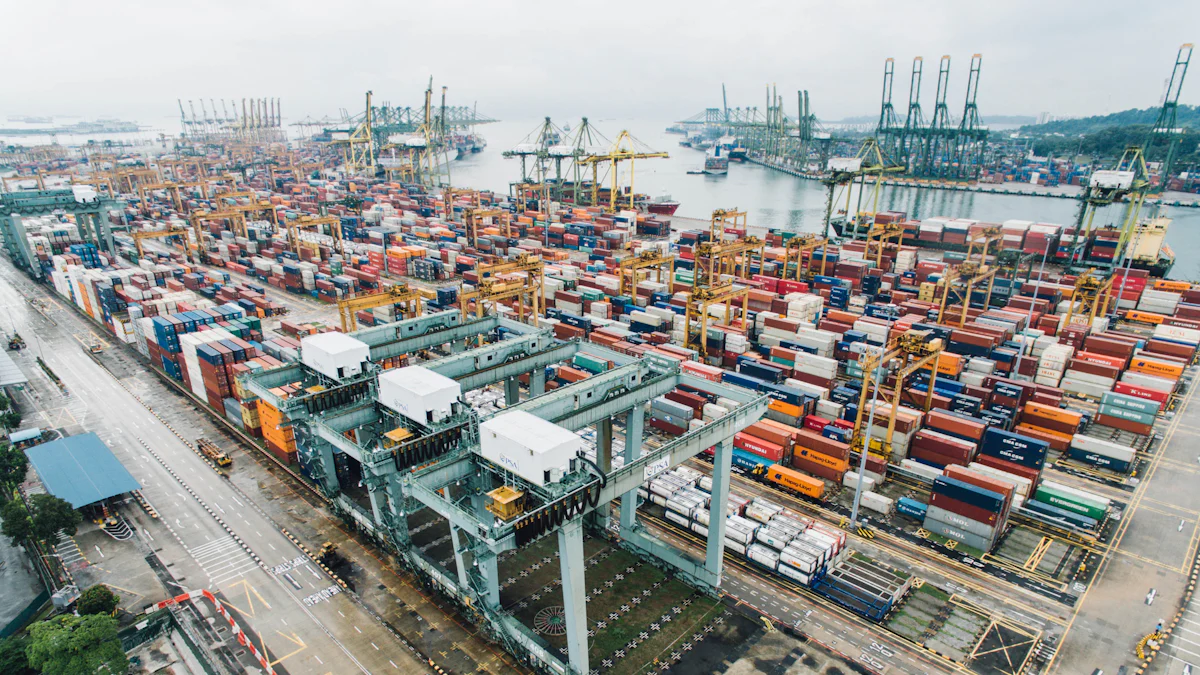Understanding Ocean Freight Market Dynamics: Future Forecast

Understanding Ocean Freight Market Dynamics is crucial for stakeholders in the shipping industry. The market influences global trade, impacting economies worldwide. Future forecasting provides valuable insights into potential trends and challenges. Accurate predictions help businesses optimize operations and stay competitive. The projected growth rate of 3.09% from 2024 to 2032 highlights the market's significance. Analyzing these dynamics ensures informed decision-making and strategic planning.
Ocean Freight Market Dynamics

Historical Context
Evolution of Ocean Freight
The ocean freight industry has undergone significant transformations over the centuries. The advent of the modern container during the Korean War marked a pivotal moment. This innovation led to exponential growth in the container shipping industry during the 1970s and 1980s. Standardized containers revolutionized cargo handling, reducing loading times and increasing efficiency.
Key Milestones in the Industry
Several milestones have shaped the ocean freight market. The introduction of steamships in the 19th century replaced sailing ships, drastically reducing transit times. The opening of the Suez Canal in 1869 and the Panama Canal in 1914 provided shorter routes for global trade. The development of mega-ships in recent decades has further enhanced capacity and economies of scale.
Current Market Landscape
Major Players
The ocean freight market features several dominant players. Companies like Maersk, MSC, and CMA CGM lead the industry. These companies operate extensive fleets and offer comprehensive logistics services. Their influence extends across major trade routes, impacting global shipping rates and service standards.
Market Segmentation
The market segmentation within ocean freight includes various categories. Segments include container shipping, bulk shipping, and tanker shipping. Each segment serves different cargo types and industries. Container shipping dominates due to its versatility and efficiency. Bulk shipping handles commodities like coal and grain, while tanker shipping transports liquids such as oil and chemicals.
Economic Impact
Contribution to Global Trade
Ocean freight plays a crucial role in global trade. Approximately 90% of the world's goods travel by sea. This mode of transport supports international supply chains and economic growth. Efficient ocean freight services enable countries to export and import goods, fostering economic interdependence.
Economic Indicators
Several economic indicators reflect the health of the ocean freight market. Freight rates, cargo volumes, and port throughput provide insights into market dynamics. High freight rates often indicate strong demand and limited capacity. Cargo volumes and port throughput reveal trends in global trade activity. Monitoring these indicators helps stakeholders make informed decisions.
JUSDA Sea Freight Services
Perfect global shipping network, integrating the whole process of shipping supply chain resources
Key Factors Influencing Ocean Freight Market Dynamics
Supply Chain Disruptions
Causes of Disruptions
Supply chain disruptions have become a critical concern for enterprises in an interconnected global economy. Natural disasters, geopolitical tensions, and pandemics often cause these disruptions. For example, national lockdowns during the COVID-19 pandemic halted manufacturing and shipping activities. This led to significant delays and shortages. Additionally, port congestions and labor strikes frequently disrupt the smooth flow of goods. These factors collectively contribute to supply chain instability.
Impact on Freight Rates
Disruptions in the supply chain significantly impact freight rates. A global container shortage has led to increased ocean freight rates, affecting various products and causing shipment delays. High demand and limited capacity often result in elevated costs. Logistics price increases are usually passed onto consumers, leading to inflationary pressures. Monitoring these disruptions helps stakeholders anticipate rate fluctuations and plan accordingly.
Technological Advancements
Automation and Digitalization
Technological advancements play a pivotal role in shaping Ocean Freight Market Dynamics. Automation and digitalization streamline operations and enhance efficiency. AI and big data processing capabilities enable real-time analysis of vast amounts of data. This technological integration optimizes supply chain management and improves predictive accuracy. Companies adopting these technologies gain a competitive edge by reducing operational costs and enhancing service quality.
Innovations in Shipping
Innovations in shipping continuously transform the industry. The development of mega-ships has increased cargo capacity and reduced per-unit shipping costs. Additionally, advancements in fuel-efficient technologies contribute to lower emissions and operational expenses. Multimodal transport solutions, such as combining rail and sea routes, improve transportation efficiency. These innovations collectively enhance the resilience and competitiveness of the ocean freight market.
Regulatory Environment
International Regulations
International regulations significantly influence Ocean Freight Market Dynamics. Organizations like the International Maritime Organization (IMO) set standards for safety, security, and environmental performance. Compliance with these regulations ensures the smooth operation of global shipping activities. Non-compliance can result in penalties and operational disruptions. Therefore, staying updated with regulatory changes is crucial for industry stakeholders.
Environmental Policies
Environmental policies increasingly shape the ocean freight market. Governments worldwide emphasize reducing carbon emissions and promoting sustainable practices. Regulations like the IMO 2020 mandate lower sulfur content in marine fuels. These policies drive the adoption of cleaner technologies and alternative fuels. Companies investing in environmentally friendly practices not only comply with regulations but also enhance their corporate image.
Future Forecast for the Ocean Freight Market

Predicted Trends
Growth Projections
The ocean freight market is projected to grow significantly in the coming years. Analysts predict a compound annual growth rate (CAGR) of 3.09% from 2024 to 2032. The market value, estimated at USD 74,901.67 million in 2022, is expected to reach USD 89,906.44 million by 2032. This growth highlights the increasing demand for ocean freight services, driven by global trade expansion and technological advancements.
Emerging Markets
Emerging markets will play a crucial role in the future of the ocean freight industry. Countries like Vietnam and India are becoming key players due to shifts in production chains and geopolitical factors. The "China+1" strategy has benefited Vietnam, while India focuses on supply chain localization and resilience. These markets offer new opportunities for growth and investment, contributing to the overall expansion of the ocean freight sector.
Challenges and Opportunities
Potential Obstacles
The ocean freight market faces several challenges that could impact its growth. Supply chain disruptions remain a significant concern. Natural disasters, geopolitical tensions, and pandemics can cause delays and increase costs. Additionally, regulatory changes and environmental policies may require companies to invest in new technologies and practices, potentially increasing operational expenses.
Strategic Opportunities
Despite these challenges, the ocean freight market presents numerous strategic opportunities. Technological advancements such as automation and digitalization can enhance efficiency and reduce costs. Companies can leverage AI and big data to optimize supply chain management and improve predictive accuracy. Furthermore, innovations in shipping, including fuel-efficient technologies and multimodal transport solutions, can enhance the competitiveness of the ocean freight market.
Expert Opinions
Industry Leaders' Insights
Industry leaders emphasize the importance of adapting to changing market dynamics. Maersk, MSC, and CMA CGM highlight the need for continuous innovation and investment in sustainable practices. These companies focus on enhancing service quality and expanding their logistics networks to meet the growing demand for ocean freight services.
Analyst Predictions
Analysts provide valuable insights into the future of the ocean freight market. They predict a buyer's market in 2024 due to increased carrier capacity. Freight rates are expected to stabilize later in the year, despite ongoing port congestion and limited capacity. Experts also forecast that ocean freight rate inflation may continue until early 2025, with rates possibly reaching between $20,000 and a Covid-era peak of $30,000.
The blog has explored the various dynamics shaping the ocean freight market, including historical milestones, current landscape, and future trends. Understanding these dynamics is crucial for businesses to manage inventory, staffing, and cash flow effectively. Market intelligence plays a key role in evaluating supply chain performance and improving internal processes.
Staying informed about market dynamics helps stakeholders make rational investment-related decisions. The projected growth rate of 3.09% from 2024 to 2032 underscores the importance of strategic planning. Considering future trends and preparing accordingly will ensure competitiveness in the evolving ocean freight industry.
See Also
Exploring the Latest in Sea Freight Logistics for 2024
Analyzing the Future of Less-Than-Truckload Freight
Understanding the Influence of Trends on Logistics Risks
Navigating the Future of Logistics Through Digital Technology
Transforming Logistics for the Future with AI in Supply Chain
